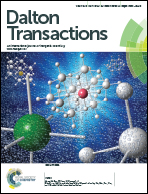Site-sensitive energy transfer modes in Ca3Al2O6: Ce3+/Tb3+/Mn2+ phosphors†
Abstract
Ce3+/Eu2+, Tb3+ and Mn2+ co-doping in single-phase hosts is a common strategy to achieve white-light phosphors via energy transfer, which provides a high color rendering index (CRI) value and good color stability. However, not all hosts are suitable for white-light phosphors due to inefficient energy transfer. In this study, the site-sensitive energy transfer from different crystallographic sites of Ce3+ to Tb3+/Mn2+ in Ca3Al2O6 has been investigated in detail. The energy transfer from purplish-blue Ce3+ to Tb3+ is an electric dipole–dipole mode, and the calculated critical distance (Rc) suggests the existence of purplish-blue Ce3+–Tb3+ clusters. No energy transfer is observed from purplish-blue Ce3+ to Mn2+. In co-doped phosphors based on greenish-blue Ce3+, however, the radiative mode dominates the energy transfer from Ce3+ to Tb3+, and an electric dipole–quadrupole interaction is responsible for the energy transfer from Ce3+ to Mn2+. A detailed discussion on the site-sensitive energy transfer modes might provide a new aspect to discuss and understand the possibilities and mechanisms of energy transfer, according to certain crystallographic sites in a complex host with different cation sites, as well as provide a possible approach in searching for single-phase white-light-emitting phosphors.


 Please wait while we load your content...
Please wait while we load your content...